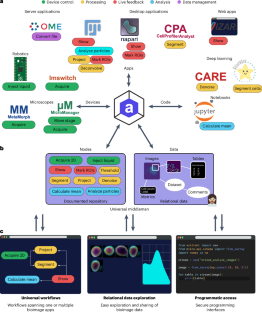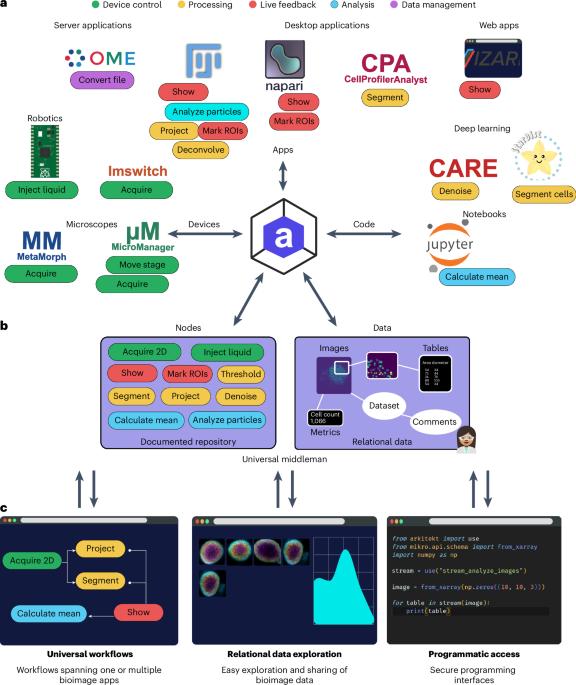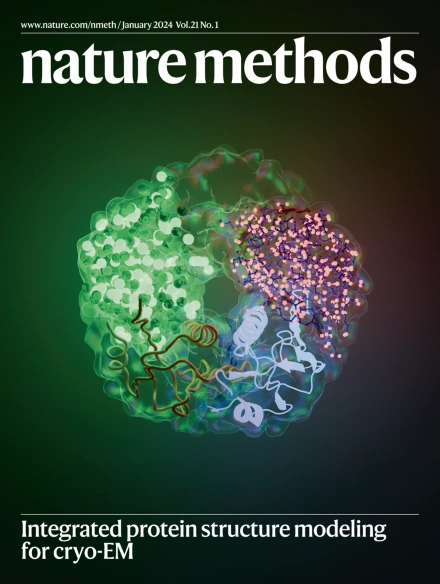Arkitekt: streaming analysis and real-time workflows for microscopy
IF 36.1
1区 生物学
Q1 BIOCHEMICAL RESEARCH METHODS
引用次数: 0
Abstract
Quantitative microscopy workflows have evolved dramatically over the past years, progressively becoming more complex with the emergence of deep learning. Long-standing challenges such as three-dimensional segmentation of complex microscopy data can finally be addressed, and new imaging modalities are breaking records in both resolution and acquisition speed, generating gigabytes if not terabytes of data per day. With this shift in bioimage workflows comes an increasing need for efficient orchestration and data management, necessitating multitool interoperability and the ability to span dedicated computing resources. However, existing solutions are still limited in their flexibility and scalability and are usually restricted to offline analysis. Here we introduce Arkitekt, an open-source middleman between users and bioimage apps that enables complex quantitative microscopy workflows in real time. It allows the orchestration of popular bioimage software locally or remotely in a reliable and efficient manner. It includes visualization and analysis modules, but also mechanisms to execute source code and pilot acquisition software, making ‘smart microscopy’ a reality. Arkitekt is an open-source platform that facilitates the implementation of complex quantitative bioimaging workflows in real time, from acquisition to visualization and analysis.


Arkitekt:用于显微镜的流式分析和实时工作流程
定量显微镜工作流程在过去几年中发生了巨大变化,随着深度学习的出现而逐渐变得更加复杂。复杂显微镜数据的三维分割等长期存在的难题终于得到了解决,新的成像模式在分辨率和采集速度上都打破了记录,每天产生的数据量达到千兆字节甚至万兆字节。随着生物成像工作流程的转变,对高效协调和数据管理的需求也与日俱增,这就需要多工具互操作性和跨越专用计算资源的能力。然而,现有的解决方案在灵活性和可扩展性方面仍然有限,而且通常仅限于离线分析。我们在此介绍 Arkitekt,它是用户与生物图像应用程序之间的开源中间人,可实时实现复杂的定量显微镜工作流程。它允许以可靠、高效的方式在本地或远程协调流行的生物图像软件。它不仅包括可视化和分析模块,还包括执行源代码和试点采集软件的机制,使 "智能显微镜 "成为现实。
本文章由计算机程序翻译,如有差异,请以英文原文为准。
求助全文
约1分钟内获得全文
求助全文
来源期刊

Nature Methods
生物-生化研究方法
CiteScore
58.70
自引率
1.70%
发文量
326
审稿时长
1 months
期刊介绍:
Nature Methods is a monthly journal that focuses on publishing innovative methods and substantial enhancements to fundamental life sciences research techniques. Geared towards a diverse, interdisciplinary readership of researchers in academia and industry engaged in laboratory work, the journal offers new tools for research and emphasizes the immediate practical significance of the featured work. It publishes primary research papers and reviews recent technical and methodological advancements, with a particular interest in primary methods papers relevant to the biological and biomedical sciences. This includes methods rooted in chemistry with practical applications for studying biological problems.
 求助内容:
求助内容: 应助结果提醒方式:
应助结果提醒方式:


